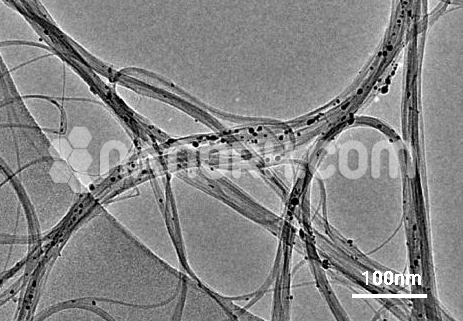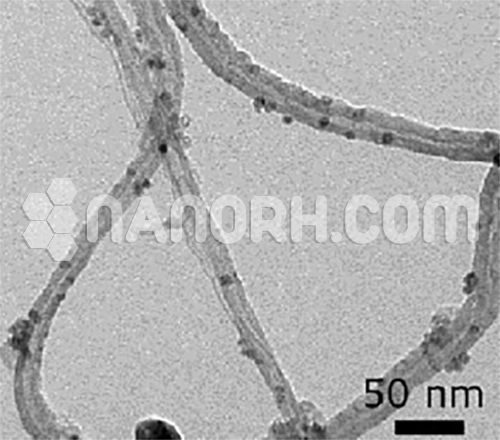| Carbon Nanotubes | |
| Product No | NRE-340090 |
| CAS No | 308068-56-6 |
| Purity | > 90 wt% |
| Diameter | 8-15 nm |
| Length | 30-50 µm |
| Special Surface Area(SSA) | 200 m2/g |
| Tap Density | 0.14g/cm3 |
| True Density | 2.1g/cm3 |
| Electric Conductivity | > 100 S/cm |
Carbon Nanotubes
Carbon Nanotubes (CNTs) are cylindrical nanostructures made entirely of carbon atoms arranged in a hexagonal lattice, resembling a rolled-up sheet of graphene. They are one of the most studied nanomaterials due to their exceptional mechanical, electrical, and thermal properties.
Applications
Electronics and Nanotechnology:
Transistors and Integrated Circuits: CNTs are used in the development of faster and smaller transistors for next-generation electronic devices.
Flexible Electronics: CNTs are being incorporated into flexible and stretchable electronics like flexible displays, wearable devices, and sensors due to their ability to conduct electricity and maintain structural integrity under deformation.
Sensors: CNTs are employed in gas, biosensors, and chemical sensors. Their large surface area and sensitivity to external stimuli make them ideal for detecting trace amounts of gases, toxins, or biomolecules.
Conductive Materials: CNTs are used to create conductive films, coatings, and wires for applications requiring efficient and lightweight electrical conductors, such as in batteries, capacitors, and antennas.
Energy Storage:
Batteries and Supercapacitors: CNTs are being used in the development of energy storage devices like lithium-ion batteries and supercapacitors. They help improve the charge/discharge cycles, capacity, and efficiency of these devices.
Fuel Cells: In fuel cell technology, CNTs are used as catalysts or catalyst supports due to their high surface area and stability, improving the efficiency of energy conversion processes.
Biomedical Applications:
Drug Delivery: CNTs are used in drug delivery systems where they can carry therapeutic agents (like cancer drugs) to specific cells or tissues.
Biosensors and Imaging: CNTs are used in biomedical sensors for detecting specific biomolecules. They are also being explored in medical imaging, as they can be functionalized to carry contrast agents for better visualization in imaging techniques such as MRI or CT scans.
Gene Therapy: CNTs are used as vectors to deliver genes into cells for gene therapy applications. Their ability to penetrate cell membranes and carry genetic material holds promise for treating genetic diseases.
Environmental Applications:
Water Filtration: CNTs are being investigated for their ability to remove contaminants from water. Their high surface area and ability to adsorb molecules make them effective in filtering out heavy metals, organic compounds, and even pathogens.
.




